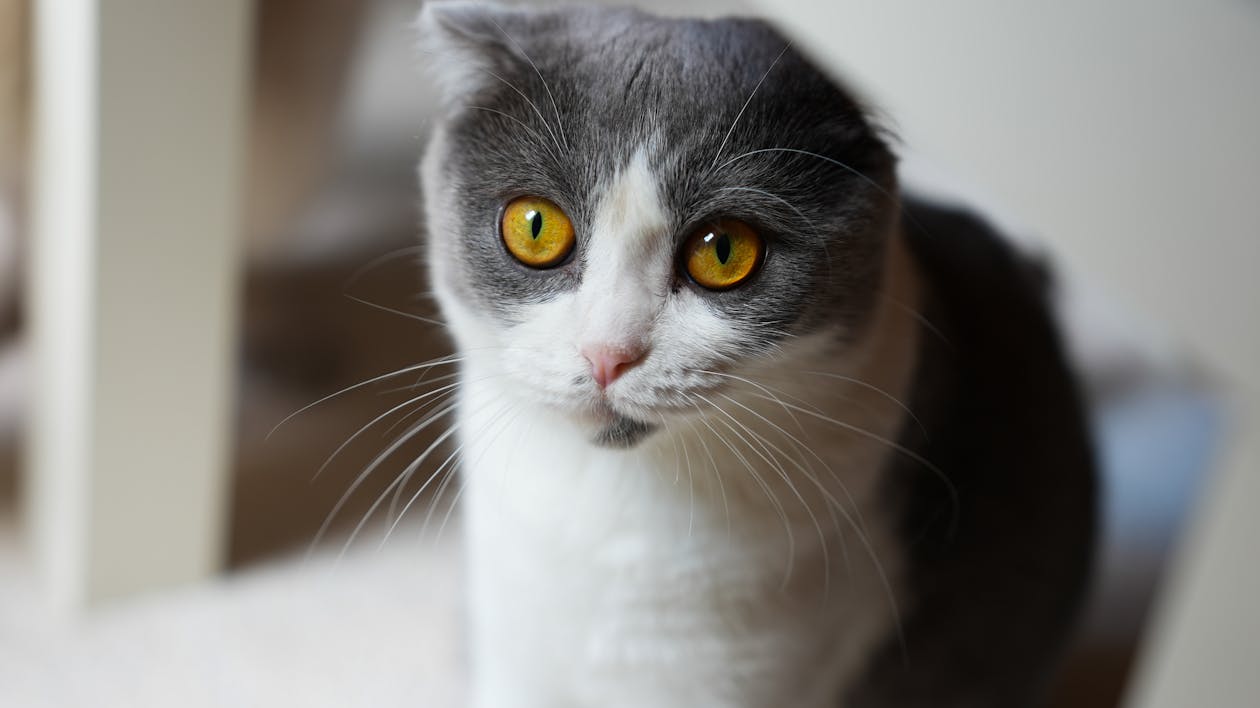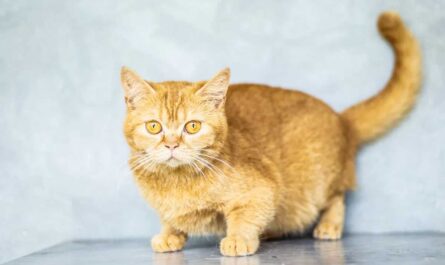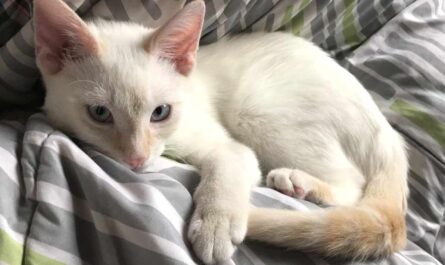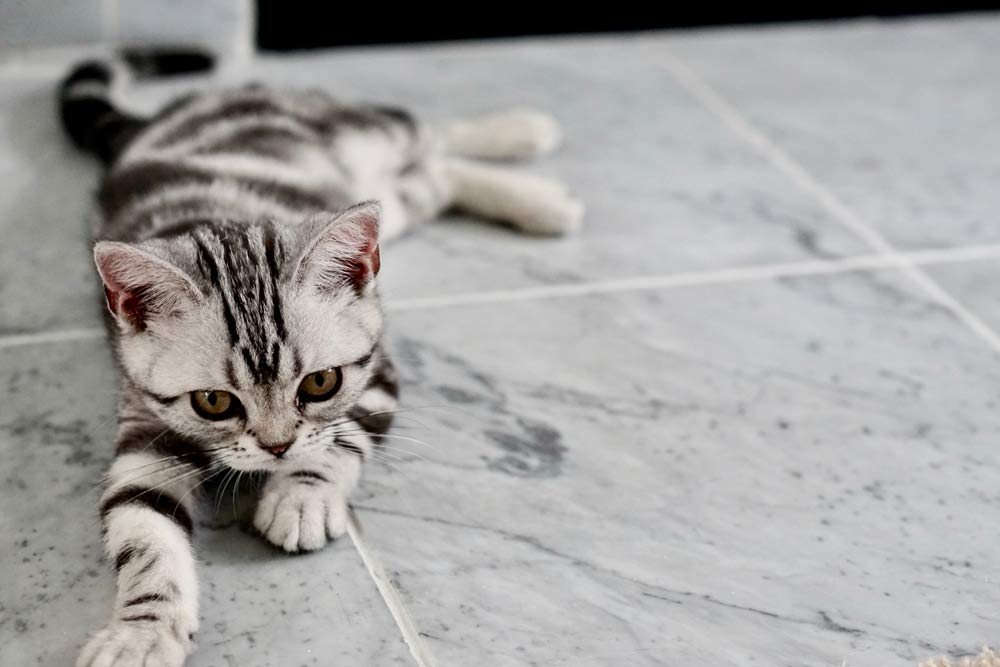Ah, the joys of pet ownership! Fluffy cuddles, playful pounces, and the endless entertainment of feline antics. But even the most delightful companions can bring unexpected challenges. If you’ve ever witnessed your cat frantically scratching at their fur, leaving behind tiny red bumps, and fleas in cats, then fleas might be the uninvited guests at your pet’s fur party.
Don’t panic! This article is your one-stop guide to understanding fleas in cats. We’ll delve into the world of these tiny parasites, explore how to identify them and equip you with the knowledge to effectively treat and prevent flea infestations, ensuring a happy and itch-free life for your furry friend.
Preview: Your Roadmap to a Flea-Free Future
Throughout this comprehensive guide, we’ll cover the following key areas:
-
Flea Fundamentals: We’ll start by getting to know the enemy – fleas! We’ll explore their life cycle, from tiny eggs to pesky adults, and understand how they can latch onto your cat.
-
Spotting the Signs: Not all scratching is created equal. Learn how to identify the telltale signs of a flea infestation, so you can take action before things get itchy!
-
Treatment Options: From topical medications to environmental treatments, we’ll discuss various approaches to eliminating adult fleas and their offspring.
-
Prevention is Key: An ounce of prevention is worth a pound of cure (and a lot less scratching!). Discover effective strategies to keep fleas at bay and ensure your cat stays itch-free.
So, grab a comfy spot, cuddle up with your feline companion (hopefully flea-free for now!), and let’s embark on a journey towards a happy and healthy future for your cat.
The Feind Behind the Fur: Understanding Fleas
Those pesky little critters that take up residence in our furry friend’s coat – fleas! While they may be tiny, they can cause a whole lot of discomfort for our feline companions. But fear not, fellow cat owner! By understanding these common parasites, we can effectively prevent and manage flea infestations, keeping our kitty happy and healthy.
Biology of a Biter: Unveiling the Flea’s Design
Fleas are fascinating (in a slightly creepy way) creatures. These tiny, wingless insects are perfectly adapted for their bloodsucking lifestyle. Imagine a miniature acrobat – fleas have a flattened body that allows them to navigate easily through an animal’s fur. Their powerful legs enable them to jump incredible distances, propelling themselves onto unsuspecting hosts. But the most distinctive feature of a flea is its mouthparts. These sharp, piercing tools are designed to puncture the skin and feed on an animal’s blood.
The Flea Life Cycle: A Speedy Symphony of Reproduction
If you think one flea is bad, just wait! Fleas have a remarkable ability to reproduce quickly, meaning a small problem can snowball into a full-blown infestation in no time. Their life cycle consists of four distinct stages:
-
Egg: Adult female fleas lay tiny white eggs, often in the environment where the host (your cat in this case!) spends a lot of time. These eggs are incredibly resilient and can survive for weeks, even off the animal.
-
Larva: The eggs hatch into flea larvae, which are small, worm-like creatures. These larvae don’t feed on blood, but they thrive on organic debris like shed skin and pet dander.
-
Pupa: After a few molts, the larvae spin a silken cocoon and enter the pupal stage. This stage can last for weeks or even months, depending on environmental conditions.
-
Adult: Finally, the pupae emerge as adult fleas, ready to jump onto a furry host and begin feeding. Adult fleas can live for several months, continuing the cycle and potentially causing significant irritation to your cat.
The key takeaway here is speed. Fleas can develop from egg to adult in as little as two weeks under ideal conditions. This rapid reproduction rate is why early detection and treatment are crucial for preventing a full-blown infestation.
Favorable Environments: A Flea’s Paradise
Just like us humans, fleas have their preferred vacation spots. Warm, humid environments with readily available hosts are a flea’s dream come true. Here are some factors that can contribute to a flea problem:
-
Seasonality: Fleas tend to be more prevalent in warm weather months, but they can survive indoors year-round thanks to central heating.
-
Multiple Pets: If you have a household with multiple cats or other furry companions, the risk of flea transmission increases.
-
Outdoor Access: Cats who spend time outdoors are more likely to encounter fleas in their environment.
-
Unclean Surroundings: A dirty or cluttered environment provides fleas with more hiding places and opportunities to lay eggs.
By understanding the flea’s ideal habitat, you can take steps to make your home less welcoming to these unwelcome guests. This might involve keeping your living space clean, vacuuming regularly, and addressing any moisture issues that could create a haven for flea larvae.
The Itch Factor: Recognizing Signs of a Flea Infestation
Imagine your feline friend, usually a picture of grace and composure, suddenly transformed into a scratching machine. Their once immaculate fur becomes a battleground, and their playful demeanor is replaced by incessant irritation. This, unfortunately, could be a sign of a flea infestation – tiny, unwelcome hitchhikers that can wreak havoc on your cat’s comfort and well-being. But fear not, fellow cat guardian! By recognizing the telltale signs of fleas, you can take swift action and restore peace (and itch-free naps) to your furry companion’s life.
Scratching Frenzy: A Sign Not to Be Ignored
The most common and immediate clue of a flea infestation is a sudden increase in scratching behavior. Your once nonchalant cat might become a scratching dynamo, relentlessly attacking their fur with paws and teeth. This intense scratching is a reaction to flea bites, which can be quite irritating for our feline friends. Pay close attention to areas like the base of the tail, the back legs, and the belly – these are prime targets for fleas.
Hot Spots and Hair Loss: The Aftermath of Itching
Constant scratching can take a toll on your cat’s delicate skin. Irritated areas may develop, appearing red, inflamed, and sometimes even forming scabs – these are often referred to as “hot spots.” In severe cases, excessive scratching can lead to hair loss in the affected areas, leaving patchy bald spots on your cat’s once-plush coat.
Black Pepper Flecks: A Tiny Clue with Big Implications
If you suspect fleas, take a closer look at your cat’s fur and bedding. Fleas leave behind tiny black specks that resemble flea dirt, often compared to black pepper flakes. These specks are flea feces, and their presence is a strong indicator of a flea infestation. To confirm your suspicions, you can dampen a white paper towel and brush your cat’s fur against it. If the black specks turn reddish-brown when dampened, it’s likely flea dirt, as it contains digested blood.
Tapeworm Risk: A Hidden Danger
Fleas can carry tapeworm larvae. If your cat ingests a flea infected with these larvae while grooming, they can become infected with tapeworms themselves. While tapeworm infections are treatable, it’s yet another reason to stay vigilant about flea prevention for your feline friend.
By keeping a watchful eye for these signs, you can identify a flea infestation early on and take steps to address the problem quickly and effectively. Remember, a prompt response is key to keeping your cat comfortable and preventing further complications. In the next section, we’ll explore various treatment options to help you reclaim your home from these tiny intruders and restore peace (and itch-free naps) to your cat’s life.
Diagnosis and Identification: Confirming the Culprit
Those pesky fleas! They can turn a playful cuddle session into a frantic scratching frenzy for your feline friend. But fear not, fellow cat owner! Equipped with the right knowledge, you can become a flea-fighting detective and give your kitty much-needed relief. This section will guide you through various methods to identify these unwelcome guests and confirm a flea infestation.
Unveiling the Tiny Terrors: A Visual Inspection
The first line of defense is a thorough visual inspection. Fleas are tiny, wingless insects, typically reddish-brown. While they can be elusive, there are areas where they tend to congregate on your cat’s body. Grab a flashlight and gently part your cat’s fur, focusing on the following prime flea real estate:
-
The Base of the Tail: This warm and cozy spot is a flea’s favorite hangout. Inspect the fur around the base of your cat’s tail for any signs of movement or reddish-brown specks.
-
The Armpits and Groin Region: These warm, moist areas are another flea haven. Carefully examine your cat’s underarms and groin for signs of fleas or flea dirt (their waste product).
-
Behind the Ears: Fleas love to hide in warm, protected areas. Lift your cat’s ears gently and check behind them for any signs of these tiny troublemakers.
If you manage to spot a flea, congratulations! You’ve identified the culprit. However, fleas can be fast and elusive. Don’t worry, there are other ways to gather evidence.
The Mighty Flea Comb: A Simple Yet Effective Tool
A flea comb is your secret weapon in the fight against fleas. These combs have fine teeth specifically designed to snag fleas and flea dirt. Gently brush your cat’s fur with the comb, focusing on the areas mentioned earlier. If you capture anything on the comb, take a closer look. Fleas are small, reddish-brown insects that jump. Flea dirt, on the other hand, looks like tiny black specks. If you see either of these signs, it’s time to take action.
The Flea Dirt Test: Unveiling the Evidence
Here’s a quick and easy test to confirm the presence of fleas. If you suspect you’ve found flea dirt during your combing session, here’s what to do:
-
Gather Your Supplies: All you need is a damp paper towel and the suspected flea dirt.
-
Place the Evidence: Put the suspected flea dirt on the damp paper towel.
-
Watch for a Reaction: If the specks turn reddish-brown, it’s a telltale sign of flea dirt! This red color comes from digested blood in the flea droppings.
This simple test can be a helpful way to confirm your suspicions and take the next step – seeking professional help.
Consulting Your Veterinarian: The Path to Relief
While the methods above can help you identify a potential flea infestation, a visit to your veterinarian is crucial. They can definitively diagnose the problem, rule out other causes of itchiness, and recommend the most appropriate treatment plan for your cat. Early diagnosis and treatment are essential to prevent a full-blown flea infestation in your home and ensure your feline friend’s comfort.
Remember, a proactive approach is key to keeping your cat flea-free. By familiarizing yourself with the signs and symptoms of fleas, and taking action at the first sign of trouble, you can ensure your cat lives a happy and itch-free life.

Battling the Bite: Treatment Options for Fleas
Oh no! You’ve noticed your furry friend scratching incessantly, and a closer inspection reveals tiny, dark fleas hitching a ride on your cat’s fur. Don’t fret, pet parent! Fleas, while a nuisance, are a common feline foe, and with the right approach, you can quickly restore peace and comfort to your feline companion. This section will equip you with an arsenal of effective treatments to banish those pesky fleas and get your cat back to feeling their best.
Taking Aim at the Adults: Eliminating Active Fleas
Our first line of defense involves eliminating the adult fleas currently residing on your cat. Here are some effective options to consider:
-
Topical Spot Treatments: These convenient solutions are applied directly to your cat’s skin, typically between the shoulder blades. The medication spreads through your cat’s fur and acts like a poison to adult fleas, killing them within hours. Talk to your veterinarian about choosing a safe and effective spot treatment for your cat.
-
Oral Medications: For some cats, or in cases of severe infestations, oral flea medications prescribed by your veterinarian might be the best course of action. These medications work systemically, killing adult fleas throughout your cat’s body. Remember, these medications require veterinary approval, so schedule an appointment to discuss the best approach for your feline friend.
-
Medicated Shampoos: In some situations, a vet-recommended medicated shampoo can be a helpful addition to your flea-fighting strategy. These shampoos contain ingredients that kill fleas on contact. However, medicated shampoos are typically not a standalone solution, as they don’t eliminate flea eggs or larvae.
Important Note: Always follow the manufacturer’s instructions carefully when using any flea treatment product. Consult your veterinarian if you have any questions or concerns about the best course of action for your cat.
Breaking the Cycle: Eradicating Eggs and Larvae
While eliminating adult fleas is crucial, a successful flea battle requires a multi-pronged approach. Fleas reproduce quickly, and their eggs and larvae can lurk undetected in your cat’s environment, waiting to hatch and unleash a new wave of itchy invaders. Here’s how to break the flea life cycle and ensure a long-term victory:
-
Environmental Flea Sprays: These targeted sprays can be used on carpets, furniture, pet bedding, and other areas where your cat frequents. They contain insecticides that kill flea eggs and larvae, preventing them from developing into adulthood and reinfesting your cat. Always follow the directions carefully and prioritize treating areas where your cat spends most of their time.
-
Regular Vacuuming: Vacuuming carpets, furniture, and other surfaces regularly helps remove adult fleas, eggs, and larvae. Don’t forget to empty the vacuum cleaner bag or canister immediately after use to prevent flea eggs from hatching inside.
-
Washing Bedding: Wash your cat’s bedding, blankets, and any other washable items in hot water (at least 140°F / 60°C) to kill flea eggs and larvae. Dry everything thoroughly on high heat for an additional layer of protection.
Remember: Consistency is key! Regularly treating your cat with a flea preventative and maintaining a clean environment will significantly reduce the risk of future infestations.
Natural Remedies (Proceed with Caution):
While some pet owners explore natural remedies for flea control, it’s important to approach these options with caution. Here’s what you need to consider:
-
Limited Effectiveness: Many natural remedies lack the scientific backing and proven effectiveness of commercial flea treatments. They might not be strong enough to eliminate a full-blown flea infestation.
-
Safety Concerns: Some natural products can be harmful to cats if not used properly. Always consult your veterinarian before using any natural flea remedy on your cat.
A Word of Caution: The internet is full of DIY flea control advice, but it’s important to prioritize your cat’s safety and well-being. Consulting your veterinarian is always the best course of action. They can recommend safe and effective treatments tailored to your cat’s specific needs and ensure a swift and successful flea eviction.
Beyond Cats: Protecting Your Home and Family
Fleas can be a nuisance for both our feline companions and us humans. While our furry friends might be the primary target of these tiny parasites, it’s important to remember that a flea infestation can quickly spread throughout your home, impacting everyone’s comfort. Let’s explore some key steps you can take to protect your entire household from the itchy wrath of fleas.
Flea Bites on Humans: An Itchy Interruption
While fleas primarily feed on the blood of cats and other mammals, humans can also be victims of their pesky bites. Flea bites typically appear as small, red, itchy bumps, often clustered around the ankles, legs, and feet – areas that are easily accessible to these jumping parasites. Imagine tiny vampires with an insatiable hunger for a quick blood meal, leaving behind itchy reminders of their presence.
The good news is that flea bites, while bothersome, are not usually dangerous. However, the constant scratching can irritate the skin and potentially lead to secondary infections. If you notice itchy bumps on yourself or your family members, it’s a good sign to investigate the possibility of a flea infestation in your home.
Zoonotic Diseases: A Reminder to Be Proactive
Fleas can also transmit zoonotic diseases, meaning diseases that can jump from animals to humans. One potential concern is tapeworm infection. If a human accidentally ingests a flea infected with tapeworm larvae (which can happen, especially for young children playing on the floor), it can lead to tapeworm development in the human’s intestines. This is why prompt and effective flea treatment for your cat is crucial – it not only protects your feline friend but also safeguards the health of your entire family.
Maintaining a Clean Environment: Starving the Enemy
Fleas thrive in cluttered and dusty environments. Think of them as tiny opportunists, seeking out cozy nooks and crannies to lay their eggs and multiply. Here are some proactive steps you can take to make your home less hospitable to these unwelcome guests:
-
Regular Cleaning: Vacuum carpets and furniture thoroughly at least once a week, paying particular attention to areas where your cat spends most of their time. Don’t forget to vacuum under furniture and along baseboards – these are prime hiding spots for fleas and their eggs.
-
Washing Bedding: Wash your cat’s bedding, as well as any throw blankets or cushions they like to curl up on, in hot water (at least 140°F) every week. This will help kill any fleas or eggs that might be present.
-
Decluttering Your Space: The more clutter you have in your home, the easier it is for fleas to hide and reproduce. Minimize clutter by storing unused items in bins or drawers, and ensure there are no piles of laundry or newspapers lying around that could provide a haven for fleas.
-
Addressing Moisture Issues: Fleas love moisture. If you have any damp areas in your home, such as a leaky basement or a constantly damp bathroom floor, address them promptly. A dry environment is much less appealing to these moisture-seeking parasites. Fitness – Meditation – Diet – Weight Loss – Healthy Living – Yoga
By maintaining a clean and clutter-free environment, you can significantly reduce the chances of fleas establishing themselves in your home. Think of it as creating a fortress against these tiny invaders, making your living space inhospitable for them to thrive.
Communication with Family Members: A United Front Against Fleas
Flea control is a team effort! If you have other pets in your household, such as dogs or rabbits, it’s crucial to treat them for fleas as well. Talk to your veterinarian about the best flea prevention options for all your furry companions. Open communication with your family members is also key. Everyone should be aware of the signs of a flea infestation and the importance of maintaining consistent preventative measures. By working together, you can create a flea-free environment for everyone to enjoy.
Remember, a proactive approach is the best defense against fleas. By keeping your cat on a veterinarian-recommended flea preventative, maintaining a clean home environment, and communicating openly with your family members, you can ensure a happy and itch-free home for both your feline friend and your entire human crew.
Final thought: A Team Effort for a Flea-Free Future
Congratulations! With early detection, proper treatment, and a commitment to prevention, you’ve successfully banished those pesky fleas from your cat’s life. Imagine your cat basking in the sun, fur gleaming and itch-free – a testament to your dedication as a pet parent.
A flea-free environment means a happier and healthier cat. Without the constant irritation of flea bites, your feline friend can focus on the important things in life – napping in sunbeams, chasing imaginary critters, and showering you with affection (or the occasional disdainful glance, but that’s just their charm!). Cat accessories on Amazon
However, remember, vigilance is key! Continue to monitor your cat for signs of fleas, and maintain your chosen preventative measures. Regular checkups at the vet can also help ensure your cat stays healthy and itch-free.
By working together as a team, you and your cat can overcome the challenge of fleas and create a happy, healthy home environment. So, celebrate your victory over these tiny terrors, shower your cat with love (and maybe a special treat!), and enjoy the peace of mind that comes with a flea-free future.
Other Interesting Articles
- How To Take Care of A Baby Kitten 2 Weeks Old: 6-Step Guide
- 20 Famous People and Legends Who Loved & Had Pet Cats
- How To Tell If A Cat is Male/Boy or Female/Girl: Tips, Guide
- A Guide to Socializing Shy, Frightened, or Traumatized Cats
- How to Stop A Cat From Spraying Indoors: Home Remedies
- How to Help Cats Get Along with a Kitten Step-By-Step
- How To Tell If Your Cat Has A Triple Coat: 7 Simple Steps
- How To Tell If Your Cat Has Down Syndrome: Signs & Myths
- 11 Signs Your Cat is a Girl: Tips To Distinguish A Female Cat
- Petting A Shy Cat: A How-To Guide, Tips, Dos, Don’ts, FAQs
- How To Tell If Your Cat Has Fleas: Best Tips To Take Care
- How To Tell If Your Cat Can’t Hear: 10 Tips To Help A Deaf Cat
- Why is My Cat Making A Weird Vibrating Noise: What To Do
- How To Tell If A Shy Cat Likes You: 14 Signs To Observe
- How To Stop A Cat From Spraying Outside: 20 Tips To Try
- How To Tell If My Cat is in Pain After Surgery: 17 Implied Signs
- How to Take Care of A Kitten For the First Time: 20 Tips
- 20 Prohibited Things You Should NEVER Do To Your Pet Cat
- What to Know Before Getting a Second Cat: Tips & Guide
- What Scents and Smells Do Cats Hate? How To Deal With



